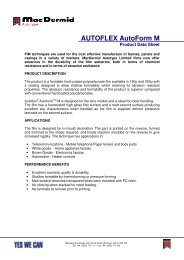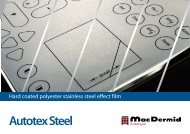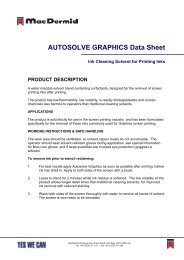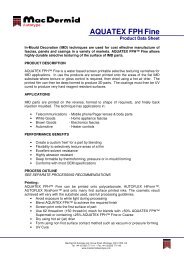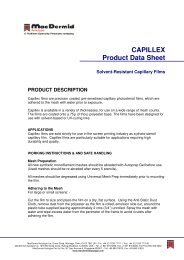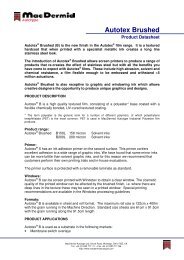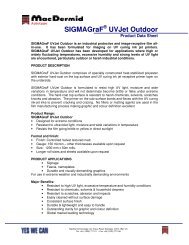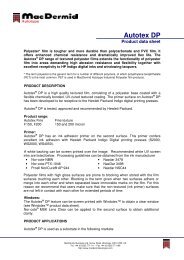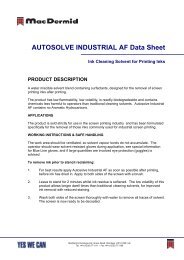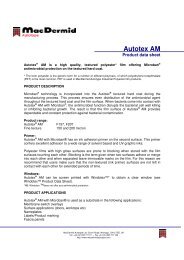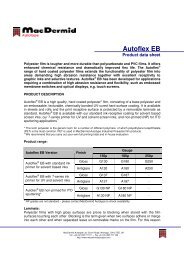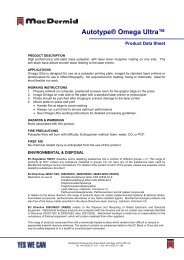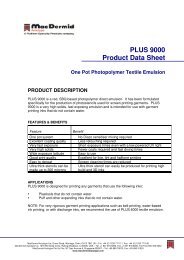Screen E-Book (.PDF) - MacDermid Autotype
Screen E-Book (.PDF) - MacDermid Autotype
Screen E-Book (.PDF) - MacDermid Autotype
- No tags were found...
Create successful ePaper yourself
Turn your PDF publications into a flip-book with our unique Google optimized e-Paper software.
atches of the ‘same’ mesh. My favouritehypothesis (though I know of no researchon this) is that differences in the shapes ofthe knuckles will give variations in ink depositand therefore different levelling times.If, for example, ‘warp’ knuckles are differentfrom ‘weft’ knuckles then the mesh markingwill be at half the frequency. The eyeis much more sensitive to low-frequencyvisual defects so such a mesh might givethe impression of being worse.Indeed, when I looked at the mesh markingfrom the 16µm mesh I was alarmedto find that the spacing wasn’t what I expected.Then I realised that it repeatedwith every 2 threads. In other words, onetype of knuckle mesh-marked, the otherdidn’t. I then realised that I’d seen this effecton polyester meshes, but because themesh marking had been less clear I’d notfollowed up on the observation.I am grateful for the expert observations ofMartin Duda. He has noted that the sameink printed on the same mesh under lowand high tension shows totally differentmesh-marking properties. The high tensiongives prints with much lower meshmarking, even with “tacky” or “thixotropic”inks which, in his experience are the worstfor mesh marking. Maybe the extra tensionis smoothing out the second knuckle,or maybe the cleaner snap-off gives lesstendency for the mesh to hang aroundin the ink and (somehow) produce worsemarking. These observations deserve tobe followed up. If higher tension reallyreduces mesh marking then this deservesto be more widely known - and the explanationfor the improvement would surelyfollow.Mesh marking is ugly, it makes people feeluncomfortable about screen printing andit degrades technical performance. Becausemany people have had the wrongmodel for what it is, very little progress hasso far been made in solving it. Now thatwe’ve dispelled some myths and now thatthe ‘every other thread’ effect seems to offera clue, let’s hope that one of the meshmakers will take up the challenge to determinethe cause and the cure. It would bea real money-making opportunity for themesh maker and a real boost to the screenprint industry.Acknowledgement:Dr Nik Kapur the University of Leeds hasbeen most helpful in sorting out many ofthe scientific issues of this complex topic.Precision registrationWe are all familiar with the problems ofregistration when the temperature andhumidity change during printing on paper.There is less familiarity with the effects onplastics as these are generally quite small.However, as the screen industry heads towardsultra-fine printing for flexible electronics,the registration problems becomequite severe.38



